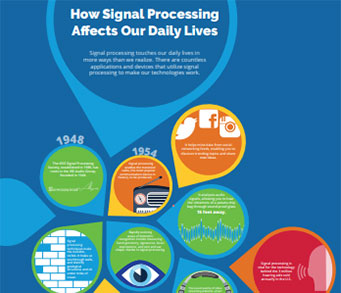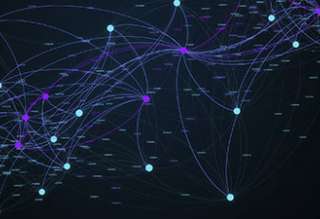SPS Feed
Top Reasons to Join SPS Today!
1. IEEE Signal Processing Magazine
2. Signal Processing Digital Library*
3. Inside Signal Processing Newsletter
4. SPS Resource Center
5. Career advancement & recognition
6. Discounts on conferences and publications
7. Professional networking
8. Communities for students, young professionals, and women
9. Volunteer opportunities
10. Coming soon! PDH/CEU credits
Click here to learn more.
The Latest News, Articles, and Events in Signal Processing
Two-directional two-dimensional canonical correlation analysis ((2D)
Many well-known line spectral estimators may experience significant performance loss with noisy measurements. To address the problem, we propose a deep learning denoising based approach for line spectral estimation. The proposed approach utilizes a residual learning assisted denoising convolutional neural network (DnCNN) trained to recover the unstructured noise component, which is used to denoise the original measurements.
To promote the applications of semantic segmentation, quality evaluation is important to assess different algorithms and guide their development and optimization. In this paper, we establish a subjective semantic segmentation quality assessment database based on the stimulus-comparison method. Given that the database reflects the relative quality of semantic segmentation result pairs...
In this paper, we present a novel Bayesian classification framework of the matrix variate Bingham distributions with the inclusion of its normalizing constant and develop a consistent general parametric modeling framework based on the Grassmann manifolds. To calculate the normalizing constants of the Bingham model, this paper extends the method of saddle-point approximation (SPA) to a new setting.
In a typical communication pipeline, images undergo a series of processing steps that can cause visual distortions before being viewed. Given a high quality reference image, a reference (R) image quality assessment (IQA) algorithm can be applied after compression or transmission. However, the assumption of a high quality reference image is often not fulfilled in practice, thus contributing to less accurate quality predictions when using stand-alone R IQA models.
The acoustic-to-word model based on the Connectionist Temporal Classification (CTC) criterion is a natural end-to-end (E2E) system directly targeting word as output unit. Two issues exist in the system: first, the current output of the CTC model relies on the current input and does not account for context weighted inputs. This is the hard alignment issue.
Sequence generation tasks, such as neural machine translation (NMT) and abstractive summarization, usually suffer from exposure bias as well as the error propagation problem due to the autoregressive training and generation. Many previous works have discussed the relationship between error propagation and the accuracy drop problem (i.e., the right part of the generated sentence is often worse than its left part in left-to-right decoding models).
A sound field reproduction method based on the spherical wavefunction expansion of sound fields is proposed, which can be flexibly applied to various array geometries and directivities. First, we formulate sound field synthesis as a minimization problem of some norm on the difference between the desired and synthesized sound fields, and then the optimal driving signals are derived by using the spherical wavefunction expansion of the sound fields.

The Collaborative Research Centre SFB 1330 Hearing acoustics: Perceptual principles, Algorithms and Applications (HAPPAA) at the Carl von Ossietzky Universität Oldenburg is seeking to fill the position of a
Research Associate (m/f/d)

The Collaborative Research Centre SFB 1330 Hearing acoustics: Perceptual principles, Algorithms and Applications (HAPPAA) at the Carl von Ossietzky Universität Oldenburg is seeking to fill the position of a
Research Scientist / PhD Student in Acoustical Signal Processing (m/f/d)
Structural equation models (SEMs) and vector autoregressive models (VARMs) are two broad families of approaches that have been shown useful in effective brain connectivity studies. While VARMs postulate that a given region of interest in the brain is directionally connected to another one by virtue of time-lagged influences, SEMs assert that directed dependencies arise due to instantaneous effects...
Pages
SPS Social Media
- IEEE SPS Facebook Page https://www.facebook.com/ieeeSPS
- IEEE SPS X Page https://x.com/IEEEsps
- IEEE SPS Instagram Page https://www.instagram.com/ieeesps/?hl=en
- IEEE SPS LinkedIn Page https://www.linkedin.com/company/ieeesps/
- IEEE SPS YouTube Channel https://www.youtube.com/ieeeSPS














